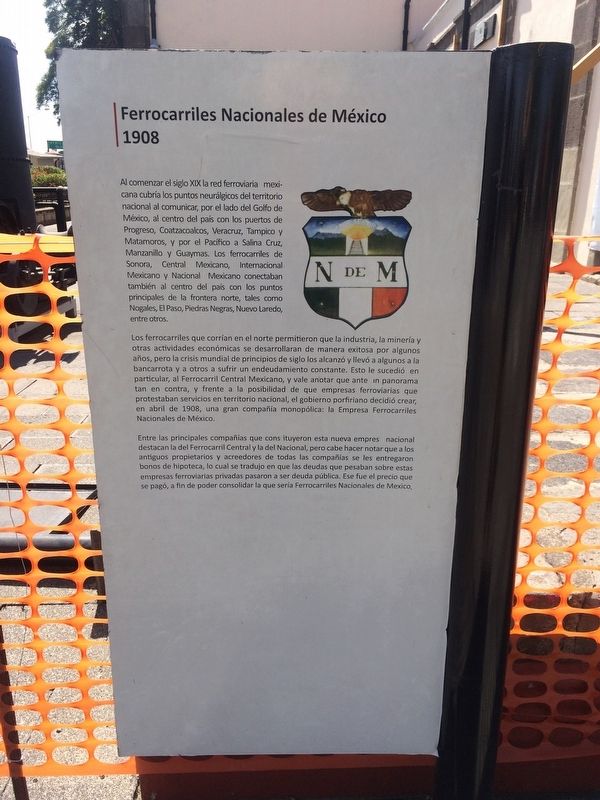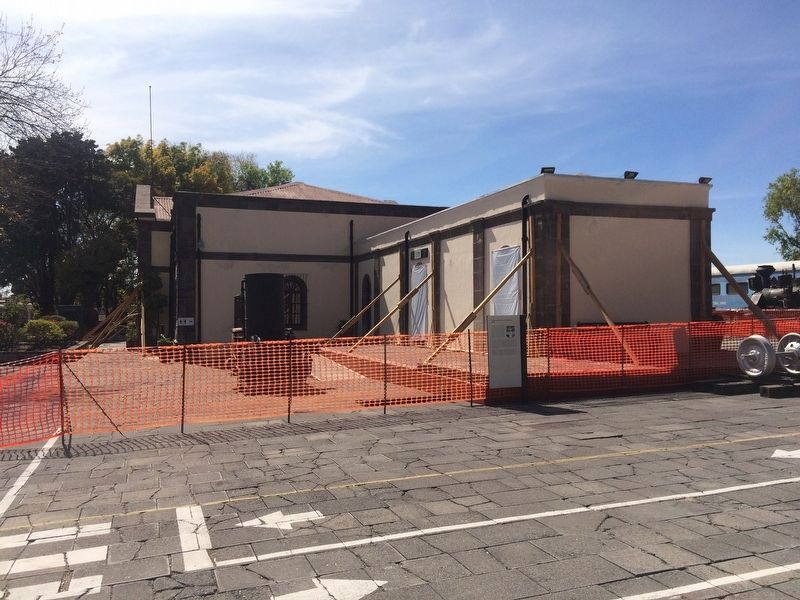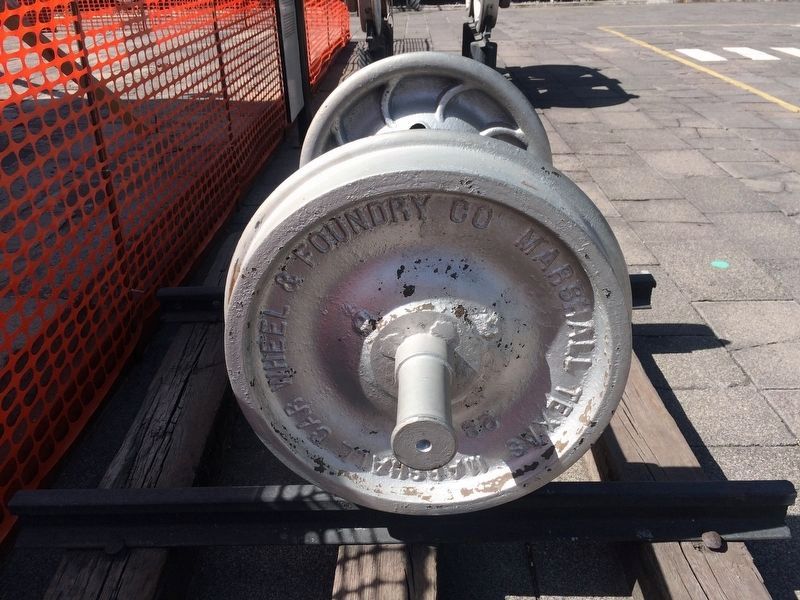Puebla, Mexico — The Central Highlands (North America)
National Railroads of Mexico
Ferrocarriles Nacionales de México
1908
Al comenzar el siglo XIX la red ferroviaria mexicana cubría los puntos neurálgicos del territorio nacional al comunicar, por el lado del Golfo de México, al centro del país con los puertos de Progreso, Coatzacoalcos, Veracruz, Tampico y Matamoros, y por el Pacífico a Salina Cruz, Manzanillo y Guaymas. Los ferrocarriles de Sonora, Central Mexicano, Internacional Mexicano y Nacional Mexicano conectaban también al centro del país con los puntos principales de la frontera norte, tales como Nogales, El Paso, Piedras Negras, Nuevo Laredo, entre otros.
Los ferrocarriles que corrían en el norte permitieron que la industria, la minería y otras actividades económicas se desarrollaran de manera exitosa por algunos años, pero la crisis mundial de principios de siglo los alcanzó y llevó a algunos a la bancarrota y a otros a sufrir un endeudamiento constante. Esto le sucedió en particular, al Ferrocarril Central Mexicano, y vale anotar que ante un panorama tan en contra, y frente a la posibilidad de que empresas ferroviarias que protestaban servicios en territorio nacional, el gobierno porfiriano decidió crear, en abril de 1908, una gran compañía monopólica: la Empresa Ferrocarriles Nacionales de México.
Entre las principales compañías que constituyeron esta nueva empresa nacional destacan la del Ferrocarril Central y la del Nacional, pero cabe hacer notar que a los antiguos propietarios y acreedores de todas las compañías se les entregaron bonos de hipoteca, lo cual se tradujo en que las deudas que pesaban sobre estas empresas ferroviarias privadas pasaron a ser deuda pública. Ese fue el precio que se pagó, a fin de poder consolidar la que sería Ferrocarriles Nacionales de Mexico.
English translation:
National Railroads of Mexico
1908
At the beginning of the 19th century, the Mexican rail network covered the most important parts of the national territory when it communicated the ports on the Gulf of Mexico (Progreso, Coatzacoalcos, Veracruz, Tampico and Matamoros) and those on the Pacific (Salina Cruz, Manzanillo and Guaymas) with the center of the country. The railways of Sonora, Mexican Central, Mexican International and Mexican National also connected the center of the country with the main points of the northern border, such as Nogales, El Paso, Piedras Negras, Nuevo Laredo, among others.
The railroads in the north of Mexico allowed industry, mining and other economic activities to develop successfully for some years, but the world crisis at the beginning of the century finally reached them and led some to bankruptcy and others to suffer constant debt. This happened in particular to the Mexican
Central Railroad. In the face of such a contradictory scenario, and with the possibility that railway companies could protest against serving parts of the national territory, the Porfirian government decided to create, in April of 1908, a great monopolistic company: The Mexican National Railroads Company (Empresa Ferrocarriles Nacionales de México).
Among the main companies that constituted this new national company, the Central Railroad and the National Railroad stand out, but it should be noted that mortgage bonds were given to the former owners and creditors of all the companies. This meant that the debt of these private railway companies became public debt. That was the price that was paid in order to create what would become the National Railroads of Mexico.
Topics. This historical marker is listed in these topic lists: Industry & Commerce • Railroads & Streetcars. A significant historical month for this entry is April 1908.
Location. 19° 3.199′ N, 98° 12.227′ W. Marker is in Puebla. Marker can be reached from Calle 11 Norte just south of Avenida 14 Poniente, on the right when traveling south. The marker is on the grounds of the Mexican National Railroad Museum, to the left just after the entrance. Touch for map. Marker is in this post office area: Puebla 72090, Mexico. Touch for directions.
Other nearby markers. At least 8 other markers are within walking distance of this marker. Railroads in the Mexican Revolution (here, next to this marker); The Railway Stations of Puebla
(a few steps from this marker); Steam Engines (a few steps from this marker); Engine 601 (within shouting distance of this marker); The Hero of Nacozari (within shouting distance of this marker); Steam Locomotive NM-601 (within shouting distance of this marker); FT Diesel-Electric Locomotive (within shouting distance of this marker); The Railroad Museum (within shouting distance of this marker). Touch for a list and map of all markers in Puebla.
Credits. This page was last revised on December 13, 2017. It was originally submitted on December 13, 2017, by J. Makali Bruton of Accra, Ghana. This page has been viewed 161 times since then and 8 times this year. Photos: 1, 2, 3. submitted on December 13, 2017, by J. Makali Bruton of Accra, Ghana.


